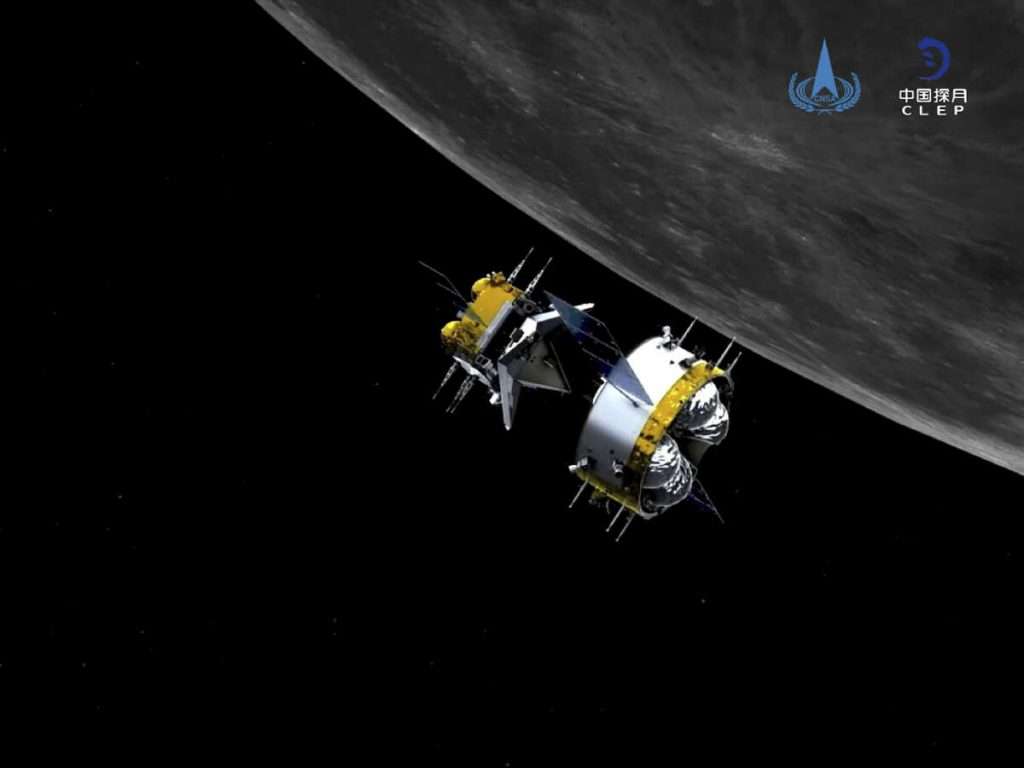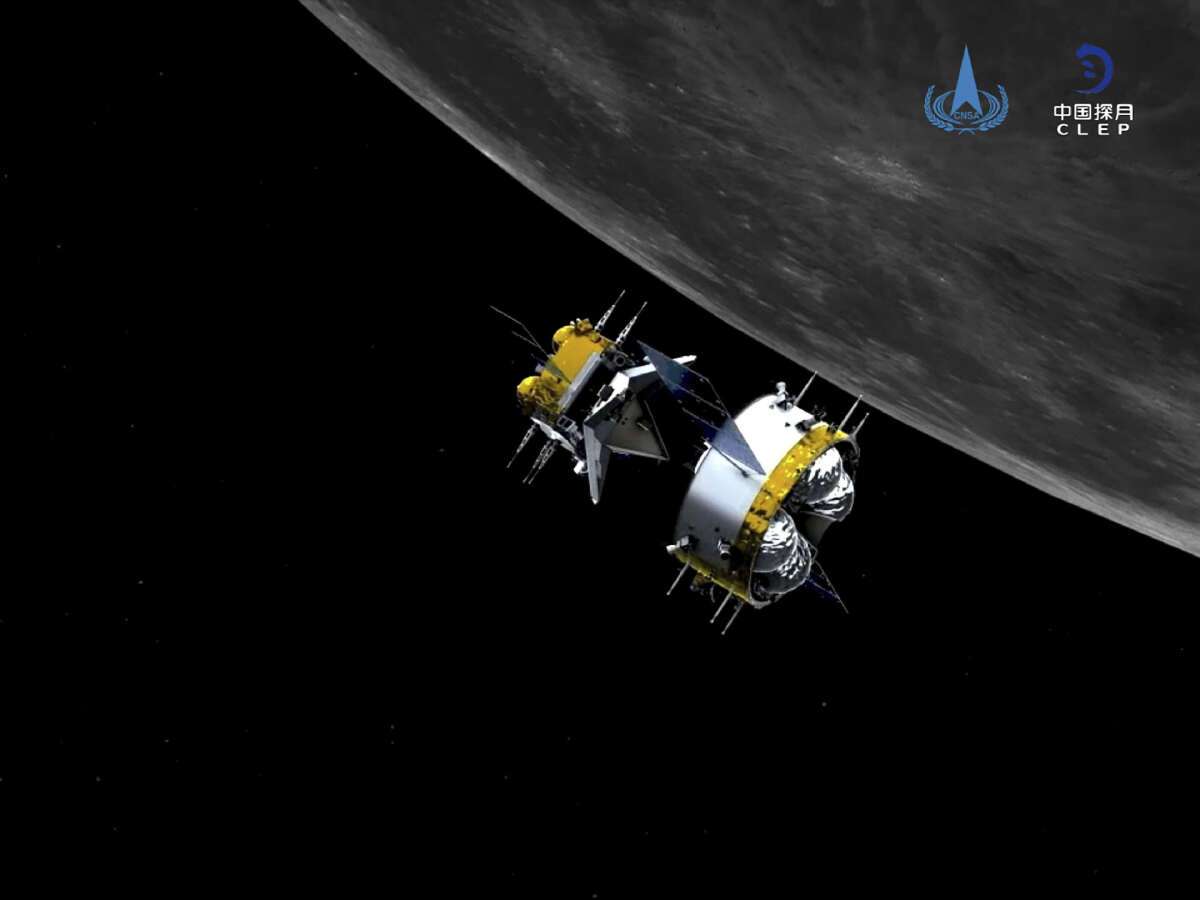
A Chinese spacecraft carrying the first samples of lunar soil returned to Earth in four decades began its three-day journey to our planet yesterday, Sunday.
The Chang’e-5 lunar probe, which orbited the moon for about one week, turned on all engine 4 for about 22 minutes to leave the lunar orbit, the Chinese National Space Administration said on social networks.
The lander of this mission touched the surface of the moon earlier this month near a structure called Rümker Peak, a zone marked by ancient volcanic activity. He collected about 2 kilograms of samples.
The return module is expected to land in northern China in the Inner Mongolia region after separation from the rest of the spacecraft and descent to the surface by parachutes. This material will be the first sample of lunar soil delivered since the USSR mission Luna-24, held in 1976.
These rocks were obtained by selection both from the surface of the moon and from the depth, by drilling the upper layer of the crust. These rocks may be billions of years younger than the rocks delivered by early Soviet and American missions, and will probably allow a deeper understanding of the history of the moon and other bodies of the solar system.
China plans to study the collected samples in the laboratory to determine the age and composition, and also expressed a desire to share them with other countries, as was done after the delivery of lunar soil to the United States and the former USSR.
China’s space programme includes a series of currently ambitious missions, including a spacecraft on the way to Mars. The Chang’e lunar program, named after the Chinese goddess of the Moon, included the Chang’e-4 probe, which worked on the relatively poorly studied far side of the Moon over the past two years.
In the future, the Middle Kingdom plans to send its taikonaut to the moon and, possibly, build a permanent lunar base. China is also building its own space station in orbit around the Earth, which will be commissioned in 2022.





